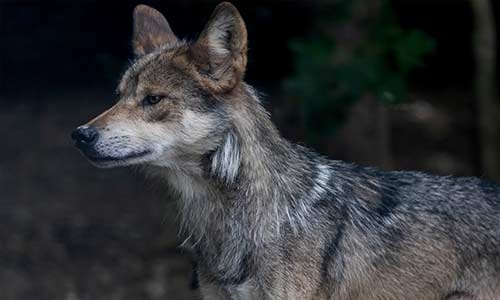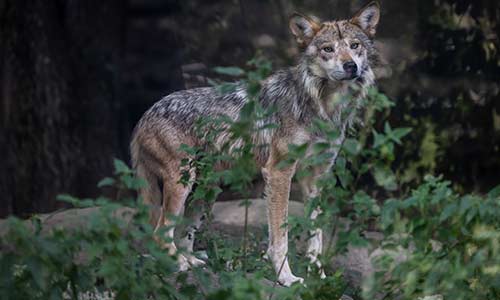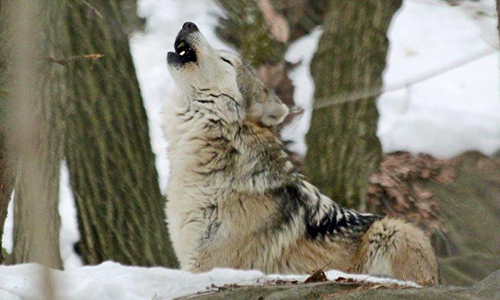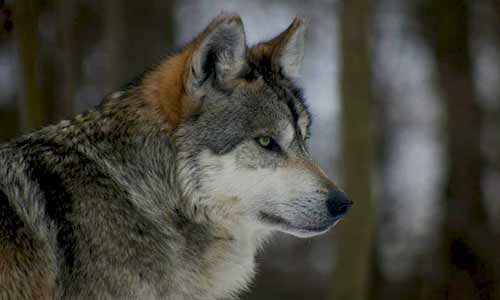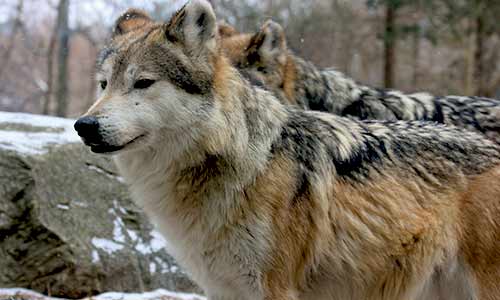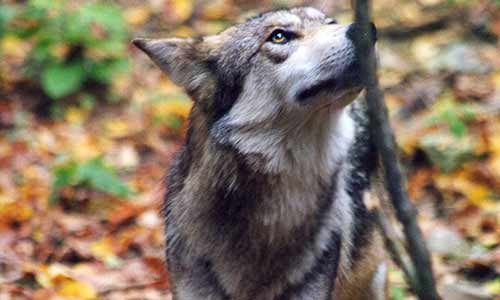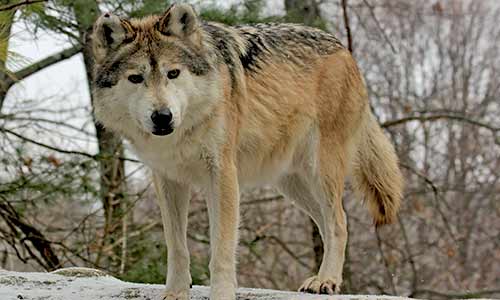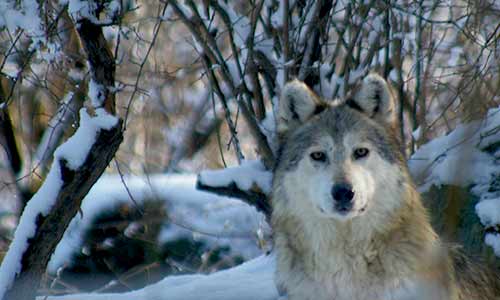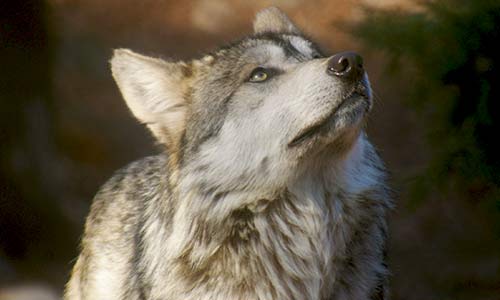Mexican Gray Wolf
Canis lupus baileyi
Tune into our live cam to see what the pack is up to!
You can control the cam by clicking the ![]() button in the lower right corner of the viewing window.
button in the lower right corner of the viewing window.
About the Mexican Gray Wolf

Geographic Range:
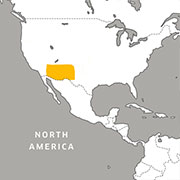
Class: Mammalia
Order: Carnivora
Family: Canidae
Genus: Canis
Species: lupus baileyi
The smallest subspecies of wolf, Mexican gray wolves, or “Lobos” as they’re called in Spanish, have fur that is tan, silver and black. Mexican gray wolves are highly social, living in packs of three to eight with a complex social hierarchy. They're very vocal animals, using barks, howls, growls, whines and whimpers to communicate. Wolves have individual, distinctive howls that can be used to assemble pack members and advertise territory.
Committed to Conservation
Since 1998, Zoo New England has been committed to re-introducing Mexican gray wolves into the wilds of the American Southwest, where they once lived in large numbers. Stone Zoo is one of about 51 facilities across the country and in Mexico participating in the Mexican Wolf Survival Plan (SSP). We've overseen births of these rare animals at Stone Zoo and collaborated closely with other facilities to transfer and receive wolves on their journey to being re-introduced to the wild.
What you can do
- Donate to Zoo New England to help sustain our Mexican gray wolf conservation work.
- Zoodopt a Mexican gray wolf! Zoodoption helps us provide excellent food, care and enrichment for all of our animals.
- Help spread a positive opinion on wolves, as many decisions made are based in fear for children or livestock, and supporting education and initiatives for livestock rotation techniques, which protect farm animals and limits damage done to wolf habitat.
Wolf Facts
Appearance:
Mexican grey wolves are most closely related to Canis lupus, the standard North American gray wolf. Mexican gray wolves are smaller than North American gray wolves, with a distinctly narrow face and distinguishing facial patterns. Their coat coloring varies, but is a distinctive combination of buff, grey, rust and black. Unlike North American gray wolves, Mexican wolves don't have solid coats of black or white.
Size:
Adult wolves weigh approximately 50 - 80 pounds, measure roughly 5 ½ feet from nose to tail tip, and stand roughly 28-32 high at the shoulder. Males are typically taller and heavier than females.
Diet:
Wolf packs hunt cooperatively to bring down large ungulates such as mule deer, elk and white-tailed deer. They'll also hunt rabbits, squirrels, javelin and other small mammals, and occasionally kill young livestock. Mexican wolves will also scavenge on carcasses.
Behavior:
The social structure of Mexican wolves is complex, with an intricate communication system that includes numerous vocalizations (howling, barking, whining, growling), as well as body postures and scent marking. Mexican wolves live in packs that consist of an alpha pair and their offspring from several generations. Packs can vary in size, but four to eight animals is typical.
Reproduction:
Female wolves reach sexual maturity at two years of age; they have one reproductive cycle per year. The alpha pair is monogamous and are typically the only breeding animals in the pack. Breeding generally occurs in February, and litters are born in April - May after a 63-day gestation. Litters often consist of four to six pups.
Habitat/Range:
Before 1900, these wolves ranged from Mexico up to Utah and Colorado. They're now only found in Arizona and New Mexico. These wolves are found in a variety of southwestern habitats, but prefer mountain woodlands. They don't live in low deserts, as was once believed.
Median Life Expectancy:
Up to 11 years in the wild
Threats:
Mexican wolves were completely extirpated (locally extinct) in the wild. Threats include sport hunting, hostility from local farmers towards wolves, habitat fragmentation by roads, cities and major construction projects in the southern United States/northern Mexico.
You Can Find This Animal in the Mexican Gray Wolf Exhibit
Zoodopt a Wolf
Zoodopts support the care and feeding of our animals, and with each purchase, we'll bring a little of the Zoo to you!
Kids' Corner
-Draw your own wolf
-Learn more about our wolf pack
You May Also Like
At Franklin Park Zoo:
At Stone Zoo:

